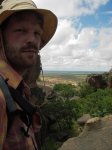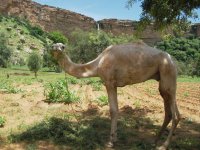|
|
Organic Soy bean production in South America
Contact us by mail at devagroeco@gmail.com to get the printable (word) full version including all the data that are black over lined in this free version.
The aims of our project:
First, we wanted to point out externalities of organic agriculture through the example of soy production in Brazil. In particular, we were interested in the impact on environment and on poverty reduction and we wondered whether there are some other positive or negative externalities that are not so obvious.
Then, we wanted to know why, if organic agriculture is so beneficial, it does not develop more from its own, that is to say try to identify the bottle neck of our example: the soy bean production.
Last but not least, we aimed to find priorities for public policies in favour of organic agriculture (in the case our first conclusions were that it can be good for both farmers and the country).
A preliminary work in order to enable us to fulfil this study was done to learn more about the network of this production, from the identification and localisation of the producers and firms to comprehension of the agricultural techniques, the ways of commercialisation and the exportation. Thus, a big part of this paper is quite similar to a market study of Brazilian organic soy bean production.
The methodology of our study:
After a brief bibliographical review mainly oriented towards organic agriculture, soy bean production and Brazil we spent 5 month in South America (mainly Brazil, Argentina and Bolivia).
There, we met several persons and researchers from certification bodies, firms and institutions (A complete list of the different persons we met with their contacts will be available at the end of the study). For institutions, we have done opened inquiries, leaded by Ben while Cecile was tacking notes that have been computed afterwards.
We first met people from the biodynamic institute (IBD, the main Brazilian certification organism for organic agriculture) and the biodynamic association (ABD) in Botucatu, São Paulo State. It was really interesting and people there help us to be linked with the network of Brazilian organic world and more specifically of organic soy bean.
After that, we spent a month in Curitiba, the capital of Paranà state. There, we met institutions, as the secretariat of agriculture (SEAB), the institute of agronomics of Paranà (IAPAR), the reference centre in agro ecology of Paranà (CPRA) and an agronomy teacher of the federal university of Paranà (UFPR). In that time, we have also met people from “Jasmine”, a firm that process organic soy beans and one consultant (engineer in agronomy) who works for a soy exporting firm in advising producers of organic soy beans. We have also worked for one week about conventional soy bean and visited the port of Paranagua which is the main cereal exporting port of South America.
The “theoretical” work was very important in order to refine the questionnaires before meeting the producers. This was also how we could locate the main production area of organic soy beans in order to go on the field (mainly in south west of Paranà but also in the region of Londrina). This part of the study lasted about one and a half month. On the one hand, we met presidents and persons in charge of producers’ associations who explained us well how the organic soy bean production was born in Brazil. We could rapidly have a good idea of the main difficulties of producing organic soy through participating in a meeting (with producers, firms, politicians and some researchers from institutions) about organic soy and by discussing with technical assistants (who are giving advices to the producers) working for the firms or the producers associations. On the other hand, we have met 19 producers of organic soy. We have asked each of them about thirty questions about their family, their farm, their way of producing organic soy bean, the commercialisation of their production and finally questions about their vision about organic agriculture. We have met different producers either thanks to the producers themselves who came to pick us up in the nearest city, either thanks to the familial agriculture syndicate (FETRAF) who lent us a car, or either thanks to the technicians of the exportation firms or the producers associations, so the sample was more or less hazardous. It may be that we have partly been showed the “best” producers but we have often chosen the producers to visit by their geographical situation (close to the small towns). Of course, it would have been better to do a really hazardous and representative sample of the producers’ population but it was not possible with the means we had at our disposal. We could at least visit 2 producers working for each of the 3 exporting firm and one was independent. We tried to meet producers from different scales: 16 of them are classed as familial agriculture whereas the 3 others are fazendas or big farms. The answers were noted on the moment and computed after, first as a Microsoft Word file and then transcribe in an Excel table in order to enable easy extraction of information for the study.
We have also visited and could meet directors and persons in charge from 2 of the 3 firms that export and process organic soy beans. Unfortunately, we weren’t able to visit the third exporting firm but instead we could visit a service firm that is attending the producers working for the latter in the production area of south west of Paranà.
For other protagonists of the organic soy network we were not able to meet, we have contacted them by mail and phone. We have thus discussed the same questions with the only cooperative which sells organic soy bean in the state of Rio Grande do Sul and with the two other certification bodies working with organic soy beans in Brazil. Meeting many different types of actors enabled us to check most of information, especially for data of production quantities. We get them first from the agriculture secretariat of Parana (but only for this state), then from the certification bodies and finally from the firms, cooperatives and independent producers.
After collecting all the data we needed, we wrote down the study. At the end of this study, we presented the main results in front of producers, institutions and firms the 8 of August 2008 at a seminar about organic production at the regional agricultural fair “Feira do Melado” in Capanema, Paranà state.
You can find more information on the french part of our website or do not hesitate to contact us for further details.
|




